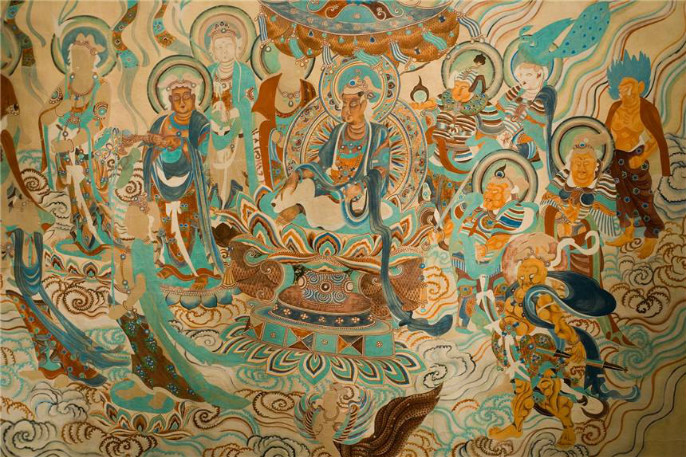
The Baisha Fresco
Baisha is a small village located in Baisha Township, 8km north of the seat of the Lijiang, there are 53 fresco groups located in the hall. Although the traditional houses do not look very impressive, Baisha was the historical capital of the Naxi kingdom and is still a good place to have a glance at the Naxi culture. There are old temples with interesting frescoes, traditional musicians. There, the invaluable Lijiang Mural is stored, preserved and displayed in 15 venerable temples, such as Juexian, Wande, Guiyi temples and Sanbi Garden. Altogether, the mural used to include more than 200 pieces of fresco. However, hundreds of years of historical vicissitudes have left only 55 pieces in good condition. The most famous frescos are known as Baisha Fresco of the Dabaoji (Great Treasure) Palace and the Colored Glaze Temple (Liuli Dian) in the town of Baisha.The Baisha Fresco was made from 1385AD to 1619 AD, employing the artist energies of Chinese Taoists, Tibetan and Naxi Buddhists and local Dongba shamans. This rich fusion had resulted in a tremendously powerful art, heavy in spirit and awe-inspiring in its presentation of the mystical world. Dominated by black, silver, dark green, gold and red colors, the murals in the back hall, overlaid with centuries of brown soot, mostly depict religious stories with vivid images, colorful ethnic styles and strong local flavor, the scenes and figures, some still vivid in detail, are largely taken from Tibetan Buddhist iconography and include the wheel of life, judges of the underworld, the damned, titans and gods, Buddha and bodhisattvas. There are trigrams, lotus flowers and even Sanskrit inscriptions on the ceiling. These frescoes are only crucial to the history of Chinese painting, but are important cultural heritage relics too.